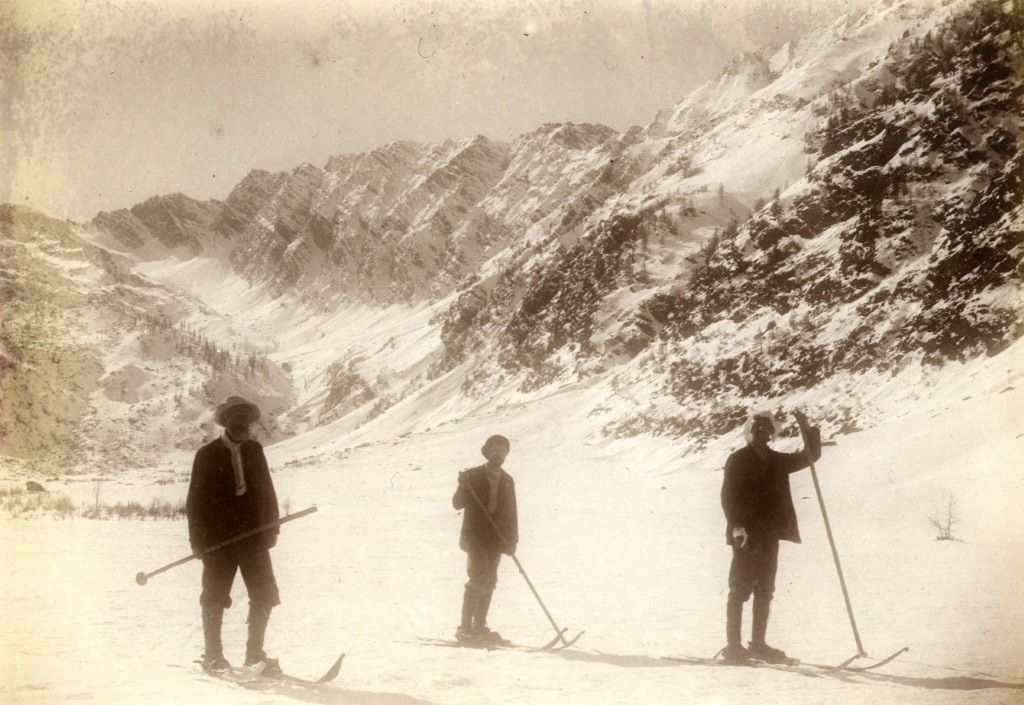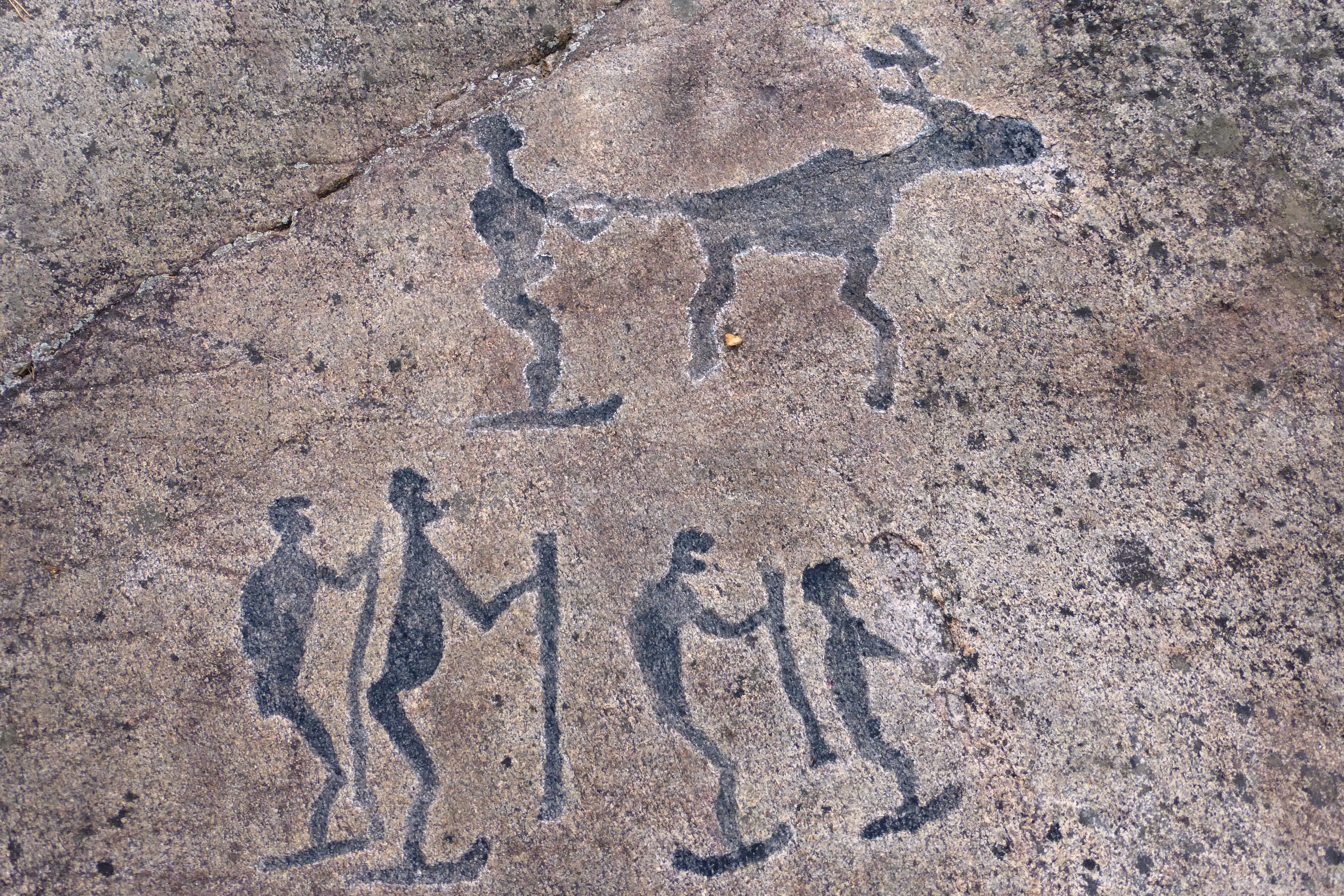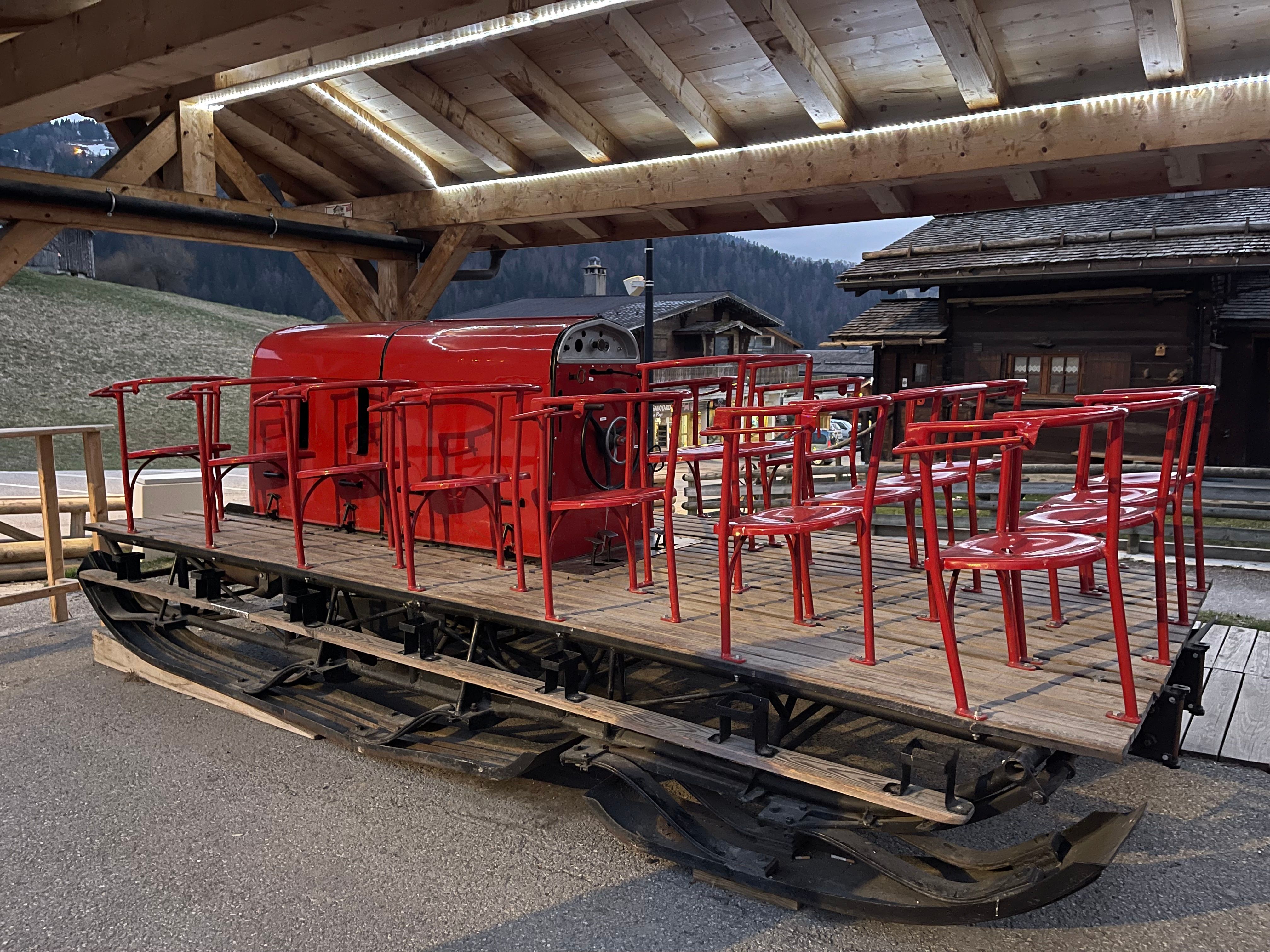
Holly Price
May, 1 2025- 4 mins
The Origins of Skiing
The desire to seek out pastures new and bring our possessions with us is an ancient one - we humans have populated the far corners of this planet for millennia, and our survival has often relied upon our ability to do exactly that, move. Our species has tackled every type of terrain in its pursuit of survival, which is why the ski was invented before the wheel; we needed to cross icy slopes to continue living long before we figured out it’s pretty fun, too. Skiing today is a global sport and leisure activity, but it started out very differently. In this guide, we’re exploring the origins of skiing and how the sport has evolved from a prehistoric survival tool to the ultimate modern-day adrenaline rush.

Prehistoric Beginnings
Along with our desire to move about is a desire to document our progress or tell stories via the mediums we have available. Long before Instagram influencers and ring lights, cave paintings and carvings were how we documented our experiences or got creative. In Tanum in Western Sweden, coastline rocks that emerged after the ice age now lie slightly inland in a forested area. These rocky areas are home to over 40,000 rock carvings across 360 locations, depicting everything from god-like figures to everyday routines involving farming and boats. The carvings date back to the Bronze Age, more than 3,200 years ago. The carvings also feature depictions of skiers, suggesting that it was already a favoured mode of transport in snowy regions all those years ago.
Other unearthed findings that have helped explore the origins of skiing include the Kalvträskskidan, also from Sweden. The Kalvträskskidan, believed to be one of the world’s oldest pairs of skis, was unearthed in 1924 by a group of men digging a ditch. Crafted from wood, the skis feature four holes that would have once secured binding straps and were found with a shovel-shaped pole, which also arguably resembles an oar and so could have been inspired by boating pursuits - they are estimated to be around 5,200 years old.

Skiing in Ancient Civilisations
Scandinavia was long believed to be the cradle of skiing, with the Norse God (Ullr) and Goddess (Skadi) proclaimed to be the gods of hunting and skiing. However, evidence suggests that skiing evolved regionally on a global scale, and Scandinavia is perhaps not where it all started. In ancient China, specifically in the Altay Mountains of the Xinjiang region, skis were supposedly crafted from wood and horsehair and used for transportation and hunting. This has been established from detailed cave paintings that are over 10,000 years old - pre-dating the Swedish Kalvträskskidan by quite a bit!
Regardless of where and when skiing originated, it’s undeniably cool to know that we humans have been strapping wood to our feet since pretty much the dawn of time.
The Rise of Recreational Skiing
Skiing didn’t transition from a survival method into a more recreational hobby until the 18th century, when the Norwegian Army brought skiing into their training remit. Officers would take part in skill competitions atop skis, where they would be required to race down slopes and across flat terrain, all while avoiding trees and shooting to hit targets. These competitions would become known as the precursor to Olympic sports.
Widely regarded a a pioneer of modern skiing, it was Sondre Norheim (designer of the telemark ski) who added things like jumping and slalom into his recreational skiing, which led to him impressing many of his contemporaries and winning a national ski competition held in Oslo in 1868. It is thanks to him that the Norwegian words of ski and slalåm (slalom) are known around the world, and that the disciplines of ski jumping and cross-country skiing exist.
Alpine Skiing and the Birth of Ski Resorts
In the mid-nineteenth century, recreational cross-country skiers evolved into daredevil downhill riders. Alpine skiing, as it is known today, was born in the Alps, with Rudolph Lettner in Austria’s Salzburg adding a steel edge to the wooden ski in 1928, and Hannes Schneider a couple of hundred kilometres away, developing what is now known worldwide as the ‘Arlberg’ technique between 1907 and 1930. The Arlberg technique is a systematic, step-by-step method of ski instruction that teaches skiers to progress from snowplough turns to parallel skiing through controlled, foundational movements.
Things took off from there - the first ski lifts to open included:
- 1908: A T-bar in Schoillach, Germany’s Black Forest Region
- 1908: The World’s First Enclosed Cable Car, the Kohlerer-Bahn, opened in Bolzano, Italy
- 1936: The World’s First Chairlift was opened in Sun Valley Resort, Idaho
Some of the oldest ski resorts in the world include Davos, Switzerland (1880,) Montgenèvre, France (1907) and Howelsen Hill, Colorado (1915.)
 (Early ski lift in Val d'Arly, France that ran from 1937 - powered by a Ford V8 engine. Image © Snomad)
(Early ski lift in Val d'Arly, France that ran from 1937 - powered by a Ford V8 engine. Image © Snomad)
Skiing Goes Global
Following the news of chairlifts, ski resorts and major competitions such as the Chamonix Winter Olympics of 1924, news soon spread that skiing was the latest thing to do. What was once a necessity for traversing snowy terrain and hunting for food was now an appealing, adrenaline-fuelled activity that soon spread beyond Europe. In the wake of the 1924 Olympics, the International Ski Federation (FIS) was also established.
The peak of ski resort construction, particularly in the United States, occurred during the 1960s, when the total number of ski areas in the US reached 1000. The 60s were also the time of ‘Plan Neige’ developments throughout France, which is why many of the purpose-built ski resorts have that distinct look of mid-century concrete. Around thirty years later, freeride culture was accelerated thanks to the early (and divisive) days of snowboarding.
The Cultural Impact of Skiing
Skiing soon ascended its status as a mere sport to become a lifestyle. It became an iconic element of culture, with everyone from James Bond to The Beatles bringing it in front of a varied, worldwide audience. With the natural evolution of the sport also came an evolution in gear - not only did clothing become more capable, durable and warm, but it also became more stylish too.
Ultimately, what was once a means of survival has evolved into a multi-billion-dollar global industry. According to The Ski Report by Savills, 370 million people visited ski resorts during the 2022-23 season, up from 201 million the year prior. Despite increasing costs of skiing, the sport continues to be a relatively accessible pastime for individuals around the world, however, we have to ask ourselves, with receding glaciers and rising temperatures, what will the next phase of the sport look like in another 1000, or even 100 years?






